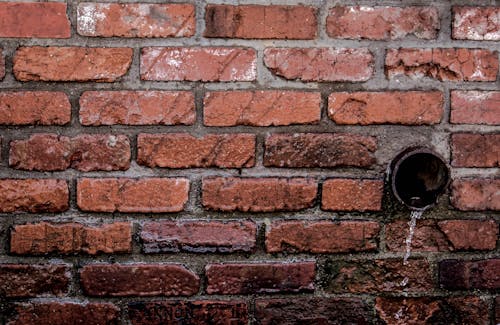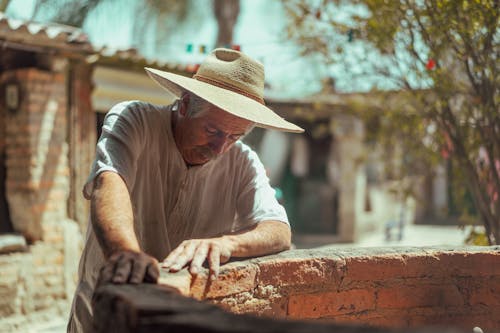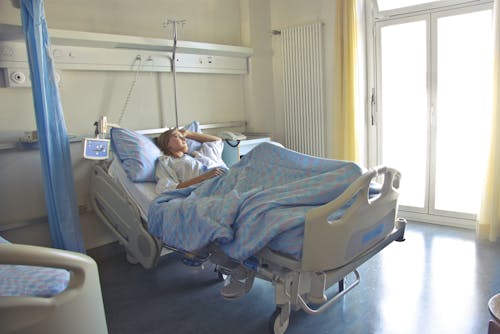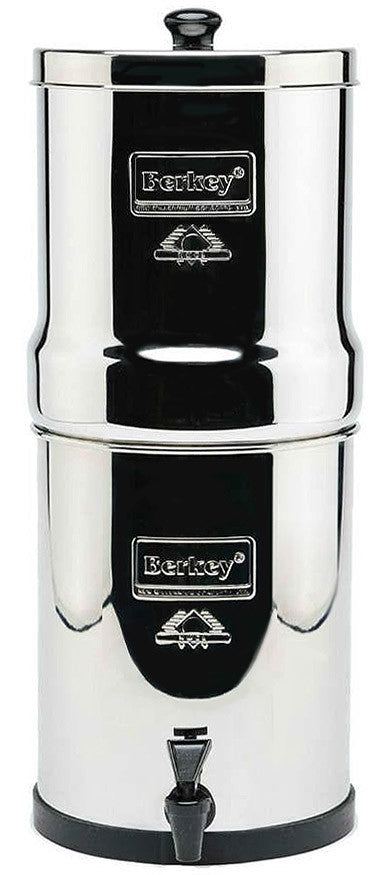CAMP LEJEUNE: AN OVERVIEW

Camp Lejeune is a 246-square-mile Marine Base Crops in Jacksonville, North Carolina. It is the home where marines and sailors work, play, and rest from doing all sorts of things: military-related forces, warfighting, and day-to-day preparations.
It also provides facilities, services, and support to meet the needs of families from nearby communities. At the base of Camp Lejeune, the United States Marine Corps (USMC) personnel and families receive water supplies.
Tarawa Terrace and Hadnot Point water treatment plants primarily acquired the water source. As such, these water supplies provide the water needs of people living nearby: enlisted-family housing, barracks, base administrative offices, educational grounds, recreational areas, and surrounding communities.
It was all good until Camp Lejeune's water contamination in the early 1980s. The water systems were contaminated with volatile organic compounds (VOCs), especially industrial solvents such as trichloroethylene (TCE) and perchloroethylene (PCE).
The residential areas served by Camp Lejeune's water supply, such as young family members and people of reproductive age, were greatly affected. The Camp Lejeune victims were subjected to serious health threats and health conditions due to toxic chemicals ingested from the contaminated drinking water.
While the camp administrative personnel claim that they immediately released warnings and health advisories as soon as they discovered the contaminated water at the camp, the victims think otherwise.
In a scenario worse than contaminated water supplies, the affected residents think that the USMC administration has deliberately concealed its knowledge of water problems, failing to notify the public and resolve the matter on behalf of the military families.
To say the least, Camp Lejeune's water contamination has become a huge controversy. The gravity of the health risks has resulted in multiple investigations, lawsuits, and US congressional actions.
Let's examine the issue more closely and discuss Camp Lejeune's water contamination, its causes, symptoms, and settlements.
THE CAMP LEJEUNE WATER CONTAMINATION: CAUSES & EFFECTS

The Camp Lejeune water contamination was a complete disaster. In the early 1980s, the Marine Corps discovered that the drinking water systems in two areas (Tarawa Terrace and Hadnot Point) were heavily polluted by toxic substances like VOCs and synthetic organic cleaning solvents.
The investigation discovered that highly destructive volatile organic compounds such as trihalomethane and perchloroethylene were present in the water dams.
Moreover, the water systems contained traces of industrial solvents, benzene, and other harmful chemicals. These results pose serious health threats to the people who have relied on Camp Lejeune's water supply for their drinking water.
As such, the military officers living at the camp and the families living in the housing facilities and nearby communities have all been subjected to water contamination.
Wells in these areas acquire water supply from groundwater and pump it into a water-treatment plan. In this case, wells were merely “cycled,” so only a few wells transferred water to the water treatment plant.
Unfortunately, wells in the Terrace and Hadnot areas were heavily contaminated. At some point, these wells pumped contaminated water to the treatment plants, mixing with and contaminating the clean water supply, processing it, and distributing it to the military base.
This incident has exposed people to water contamination, either short-term or long-term.
Tarawa Terrace

Further, it was said that water wells in Tarawa Terrace were not exempted from water contamination. It contained high amounts of PCE due to off-base dry cleaning operations where the authorities noted incidents of accidental spills and inappropriate disposal of PCE.
Therefore, water contamination occurred years before 1980; it could have improved since 1953, when multiple, hard-on dry-cleaning operations were needed.
Hadnot Point

The wells in Hadnot Point were also not contamination-free. The water supply in this area was even worse because it had numerous sources of contamination and a surplus of water contaminants.
The predominant one is the TCE, which resulted from on-base spills in multiple industrial settings and chemical leaks from underground storage tanks. Some toxic substances also come from drums at dumps and storage lots.
In addition to these, the Hadnot Point water contamination is believed to have come from the following sites: an industrial dump, storage pits, platforms for fire preparation, training areas, a site of previous on-base cleaners, old burn dumps, gas tank areas, and the original base dump.
THE EXTENT OF WATER CONTAMINATION

It is still unclear when the contamination in these water treatment plants began. Officially, the wells in the aforementioned water areas were removed from service between 1984 and 1985 since public consumption of such is very dangerous to human health.
In summary, TCE and PCE are the most concerning water contaminants in Camp Lejeune. These are environmental contaminants used in occupational operations and hazardous waste places.
Various studies have suggested that these two industrial solvents are responsible for health problems experienced by victims after exposure. Research has backed this hypothesis, claiming that TCE and PCE can cause adverse health effects, including certain types of cancer.
As such, human (and animal) consumption of TCE—and PCE-containing water is highly risky.
THE HEALTH CONDITIONS AND SYMPTOMS OF CAMP LEJEUNE WATER CONTAMINATION

Some of the health risks associated with the Camp Lejeune water contamination are as follows:
• Bladder Cancer
Drawing from various research studies, the toxic chemicals found in Camp Lejeune’s water have resulted in an increased risk of bladder cancer among the victims. By definition, bladder cancer is a common type of cancer where cancer cells take over the urinary bladder and grow out excessively —with almost no sense of control.
According to the Mayo Clinic Organization, one of the risk factors for bladder cancer is exposure to harmful chemicals. Additionally, it may also include the following factors: age, gender, chronic disease, and even smoking status.
As such, this cancer disorder is even more common and dangerous to the elderly as old age is scientifically proven to come with abnormal cell growth.
There are drugs and treatments designed to cure bladder cancer. This may include drugs such as Avelumab and Balversa. There are also chemotherapy treatments available. When bladder cancer is hard to cure, early detection and treatment will greatly increase your chances of survival and recovery.
• Breast Cancer
This is another cancer disorder associated with Camp Lejeune water contamination. This is based on the study that has concluded that exposed women at camp had higher risks of contracting breast cancer than those who did not consume the contaminated water.
The reason for this is that the toxic chemicals present in the water have led to the disruption of normal functions of breasts in general. It is also possible that water contaminants have damaged the DNA of the victims, leading to abnormal cell growth.
One of the most common symptoms of breast cancer that one may notice is breasts changing in size, shape, and texture. In other cases, there are lumps felt inside the breasts or a liquid discharge from the nipples.
• Multiple Myeloma
Another type of cancer victims are at risk is this. Studies have shown that there is a statistical increase of up to 56% in developing this kind of cancer if people were exposed to the Camp Lejeune water contamination.
This type of cancer is a bone marrow cancer in which abnormal plasma cells accumulate in the bone marrow. It causes major problems with blood cell production and affects other body parts, such as the spine, skull, pelvis, and ribs.
To say the least, the possible symptoms of Multiple Myeloma are so common that you’d think it’s just normal fatigue or some sort of body infection. This is why detecting this cancer in its early stages is hard.
Conclusively, this type of cancer disorder is caused by environmental and genetic factors.
• Liver Cancer
The Camp Lejeune water contamination has also resulted in an increased risk of liver cancer. Liver cancer is a disorder heavily associated with liver damage caused by unhealthy vices such as excessive alcohol consumption. In essence, the Agency for Toxic Substances and Disease Registry (ATSDR) discovered that male victims were 2x more at risk of developing liver cancer than those who were not.
This was the result of exposure to harmful chemicals such as benzene and TCT with risks of DNA damage and contracting cancer disorders such as liver cancer.
The symptoms of liver cancer may come out basic and simple, like unhealthy weight loss, body fatigue, abdominal pain, etc. As for its treatment, there are several surgeries, chemotherapy treatments, radiotherapy, and medications that one can take for a higher chance of recovery.
• Cervical Cancer
This type of cancer disorder is also associated with water contamination in Camp Lejeune. As such, cervical cancer begins when abnormal cell growth happens in the tissues of the cervix, located in the lower part of the uterus.
Accordingly, it is caused by a virus called human papillomavirus (HPV) which is contracted through a sexually transmitted disease induced in vaginal, anal, and oral sex activities. The experts believe that due to the water contamination in Camp Lejeune, women have become more exposed to the said virus.
There are several symptoms you should watch out for, just in case: vaginal bleeding, heavier and longer menstrual cycle, pain in sexual intercourse, bloody vaginal discharge, as well as pelvic and lower back pain.
• Kidney Cancer
Another cancer disorder common among the victims of Camp Lejeune water contamination is kidney cancer. This is a cancer disorder where kidney cells become malignant and grow out of control—spreading to other parts of the body. This may disrupt the functions of the kidneys, such as filtering waste from the blood and flushing it out of the body.
As mentioned above, the contaminated water in Camp Lejeune contains benzene and TCT, which trigger the risk of kidney cancer, especially when people are exposed to such harmful chemicals for a long period.
The symptoms of kidney cancer typically range from urination problems to the development of mass in the abdominal area. In addition, one may experience symptoms such as fever, fatigue, and extreme tiredness.
• Renal Toxicity
This is a popular symptom experienced by most victims of the contaminated water at Camp Lejeune. In simple words, renal toxicity is damage to the kidneys, which, if left untreated, can ultimately lead to kidney failure. This symptom occurs when one is heavily exposed to toxins such as alcohol, heavy metals, and environmental pollutants.
Some of the symptoms to watch out for are as follows: decreased or increased urination, fluid retention, swelling, nausea, high blood pressure, and blood in the urine.
This is a very serious health complication as one would need to undergo dialysis and take several drug doses to not only treat but at least help alleviate the symptoms.
THE SETTLEMENTS FOR CAMP LEJEUNE VICTIMS

Disability Compensation and Disability Benefits
As part of Camp Lejeune’s vow for settlements, this disability compensation and benefits are given to Veterans, Reservists, and National Guard members who contracted physical disability due to water contamination.
Hence, veterans who contract the following health conditions (listed below) directly linked to Camp Lejeune water contamination can file a claim. This way, they will receive primary care conveniently and free of charge!
Disease eligible for the compensation:
-
Adult leukemia, Aplastic anemia and other myelodysplastic syndromes, Bladder cancer, Kidney cancer, Liver cancer, Multiple myeloma, non-Hodgkin's lymphoma, and Parkinson's disease.
However, it is important to understand that disability compensation and benefits are assessed individually. The administration will review your claims before determining the final settlement amount for health care expenses (or benefits).
Caring Camp Lejeune Families Act of 2012
As part of the 2012 Camp Lejeune Healthcare Law, it is stated there that the administration should provide free health care to Veterans who served at least thirty (30) days of active duty at the military base camp from August 1, 1953, to December 31, 1987.
In essence, veterans with qualifying health conditions, as listed below, are eligible to enroll in VA healthcare and receive medical services free of charge.
Disease eligible for the compensation:
-
Esophageal cancer, Breast cancer, Kidney cancer, Multiple myeloma, Renal toxicity, Female infertility, Scleroderma, Non-Hodgkin's lymphoma, Lung cancer, Bladder cancer, Leukemia, Myelodysplastic syndromes, Hepatic steatosis, Miscarriage, and Neurobehavioral effects.
Camp Lejeune Justice Act of 2022
President Biden recently signed the Camp Lejeune Justice Act into law. This bill allows victims to sue and seek compensation for damages caused by the contaminated water at Camp Lejeune in North Carolina. The U.S. government is working to help people who were stationed, lived, and worked at Camp Lejeune for at least thirty (30) days.
Moreover, this new bill prohibits the state from contending specific measures of immunity from litigation against the civil lawsuits filed by the victims and their family members. Finally, this soon-to-be law will rightfully give the victims of Camp Lejeune water contamination a long-time and well-deserved judicial relief.
IS IT A CASE CLOSED OR NOT?

In conclusion, Camp Lejeune water contamination was of great concern because it causes alarming health issues and complications. Clean drinking water is essential for a community's overall quality of life.
If water is not treated properly, pollutants and other harmful chemicals will contaminate drinking water, which will, in turn, tremendously harm human health in the long run.
The government should facilitate the regulation of clean water treatment plants. If the higher-ups fail to fulfill their duties, the people will suffer, and millions of lives will be at stake.
After all, clean water quality is a basic human necessity; without it, people will not thrive, let alone survive.
In this amazing world of innovation, the Berkey Water Filter would have been a great tool to eliminate PCE contaminants such as perchloroethylene or tetrachloroethylene. It proves the essence of water purification in the first place.
Essentially, the Berkey Water Filter can remove hundreds of contaminants from the water and purify more than any other gravity filter available, producing the healthiest and cleanest drinking water ever.
If you wish to know more, call us at (888) 899-3903 or visit our website, theberkey.com.
So, to answer the question, is the Camp Lejeune water contamination case already closed? The answer it concerns is only the victims and their family members can testify.
← Older Post Newer Post →





